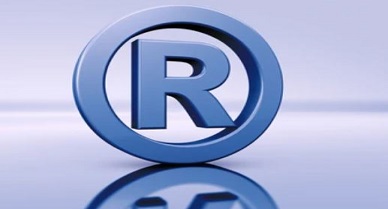Trademark Class Choose Wisely To Avoid Objection
Introduction
Trademarks are recognised phrases, words, or symbols that designate a certain item and lawfully distinguish it from all other items of the same type. A trademark is a valuable intellectual property that businesses use to differentiate their brand from their competitors’ in the market. Trademarks are used to identify and protect a product’s or service’s words and graphic components. It might be a symbol, a motto, or even the product name. In India, trademarks are controlled by the Trade Marks Act 1999, which lays out several rules that clarify the system and stages required for registering a trademark. The Registrar of Trademarks is in charge of granting or rejecting trademarks. During the process of registering a trademark, an applicant may encounter two obstacles: a) Objections; b) Contradictions
Trademark Objections
Trademark objections are those that a client encounters during the early stages of the registration procedure. During the course of reviewing the request, the registrar may propose changes. The Registrar evaluates the application and determines grounds for denial under Trademarks Act Sections 9 [1] and 11 [2]. Now, let’s talk about how to deal with or avoid complaints brought under Sections 9 and 11 of the Act.
[Image Sources : Shutterstock]
Trademark class
These trademark classes are significant since your registration of a trademark will only safeguard your trademark in the class that you specify on your application. The trademark categorization system categorises all products and services into 45 trademark classes, including 34 for goods and 11 for services. Each class has a wide range of products and services, which are not particularly obvious from the class name. Aprons, dresses, t-shirts, socks, and shoes, for example, are included in class 25 (clothing). Class 29 (meat, fish, poultry) has meat and milk but also jam and potato chips, whereas class 30 (coffee, wheat, rice) contains popcorn, spices, ice cream, and cereal in addition to coffee.
Why IS IT MANDATORY TO REGISTER A TRADEMARK IN TRADEMARK CLASSES?
When you register your trade mark in a certain class, you restrict others from registering similar or slightly similar trade marks in the same class. This prevents someone else from using the same trade mark as yours to offer the same items or services.
It does not exclude someone from registering a comparable trade mark in a different class(es); therefore, make sure to register your trademark in all classes you believe are relevant.
Classification Of Trademark
Trademarks must be registered in at least one of the 45 ‘classes’. 34 of these classifications are for products, while 11 are for services.
The following are some examples of commodity categorization classes:
Class 9: astronomical, navigational, measuring, filmmaking, visual, weighting, calculating, data processing facilities, computers, computer software, converting, and other similar activities
Class 16 consists of paper products, printed material, stationery, instructional and educational materials, photos, and other similar items.
Examples of service categorization classes include:
Advertisement, business administration, business management, and office functions are all part of Class 35.
Class 41: Education, training, amusement, and so on.
Class 42: Scientific and technological services and related research and design; industry analysis and research services; computer hardware and software design and development
Class 45: Legal assistance, security agencies for the protection of property and persons, personal and social services provided by others to suit individuals’ requirements
How Do I Decide Which Class(Es) My Trademark Should Be Registered In?
Choosing which classes to register your trade mark in might be difficult.
The first stage in identifying your class is to draw a specification, which should include a description of the products or services for which you are using or intend to use the mark. The specification should be as explicit and accurate as possible, and it should include not just things of present interest but also those that are expected to be of future interest.
You should consider the following factors while determining which class your services or goods belong to:
- The aim and function of the products or services
- Whether or not the items contain any raw ingredients
- What actions are performed as part of the service, and
- What is the topic or activity of the services offered?
It is not in your best interests to broaden the specification to include items or services that the firm does not aim to market. This is due to the fact that it may lead to.
How To Avoid Trademark Opposition
To avoid trademark objections, you must follow specific principles while choosing the appropriate trademark. To that end, avoid unique terms, well-known markings, forbidden marks, and misleading language. The examiner may raise a trademark objection for a variety of reasons, including third-party objections to your planned trademark, resemblance to a preexisting mark, the proposed mark being judged vulgar, the intended mark hurting religious emotions, and so on. A trademark application might be challenged for several reasons.
There is no general rule for avoiding trademark challenges. However, if you pick the mark with greater care, you can avoid the problem.
Important Consideration To Bear In Mind In Order To Prevent Objections
Sometimes objections are expressed just to obtain information. In that scenario, all you have to do is respond with the necessary information. As there is no set procedure for avoiding trademark complaints, the following considerations might assist you in avoiding them:
Perform a mark-and-phonetic search.
Conduct a good search of the mark and phonetic sound before filing for trademark registration to coin a distinctive trademark. A deep examination of the trademark database aids in the formation of an exclusive and unusual trademark. After reviewing the trademark search report, if any resemblance in the mark or sound is discovered, attempt to avoid such markings in order to avoid a complaint over the likeness of the mark.
Select distinct terms.
In order to be registered, a trademark must be unique. Simply having a descriptive mark does not make it unique enough to be registered. Always use a word that is distinct, one-of-a-kind, and non-descriptive. Trademark law prohibits the registration of a mark that indicates the nature of the goods. It is preferable to use a word that does not have a dictionary definition and has no direct relation to the product.
Avoid well-known brands.
Never utilise prominent brand names or combinations of well-known marks, even if the combinations of the brand name are available for registration. If a mark is judged to be a well-known or popular mark, using a similar mark alone or in combination may generate an issue. Prevent famous marks, even if they are not registered, to avoid the complaint.
Avoid trademarks that are illegal or controversial.
Trademarks, including names or flags protected by the Emblems and Names Act, are denied. A trademark might be challenged on the basis of a disgraceful mark or symbol.
Avoid using false or abusive words.
Any third party or trademark examiner may object to a trademark’s registration on the grounds that it spreads deceit to the public. Deceptively denotes a mark that is either linked with a geographic place or that offends people’s religious emotions.
Do not utilise any existing trademarks.
Marks that have already been registered in the trademark database will almost certainly not be registered again. As a result, if you are going through the procedure with an existing trademark, it is likely that it will be denied and objected to by the opposition and then by the trademark office. Try to distinguish between previously recorded class marks and how your class mark differs.
Do not try to recreate identical markings.
The use of similar or identical trademarks results in the loss of the trademark’s ability to signify. Customers are confused about the items since the trademarks are identical. The only way to avoid trademark similarities is to dilute the trademark. Be explicit about your product, i.e., explain how it differs from similarly titled items and why it will not harm their market.
CONCLUSION
If an applicant’s trademark is similar to one that currently operates in the market, he should be able to demonstrate that a layperson would be able to distinguish his mark from the others. An applicant should be able to identify his mark from that of the other person’s mark and substantiate his reasoning with adequate proof to assert ownership over the mark, whether during an Objection, Opposition, or reply to an Opposition.
Author: Ishan Anand, Coauthor : Medha Banta, in case of any queries please contact/write back to us at support@ipandlegalfilings.com or IP & Legal Filing.
[1] Trademark Act, § 9, (1999)
[2] Trademark Act, § 11, (1999)
REFERENCES
https://corpbiz.io/learning/reasons-for-trademark-objection/
https://www.lexology.com/library/detail.aspx?g=fb3064ea-1547-4325-b843-1e855e637cc3
https://2ndinnings.org/blog/avoid-trademark-objections.php’
https://www.legalwiz.in/blog/5-things-to-consider-for-trademark-registration-application
https://www.quickcompany.in/articles/how-to-avoid-trademark-objection



